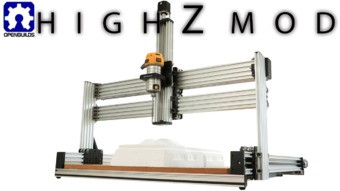High Z Mod for Lead CNC
Discussion in 'CNC Mills/Routers' started by Mark Carew, Oct 11, 2019.
High Z Mod for Lead CNC
Discussion in 'CNC Mills/Routers' started by Mark Carew, Oct 11, 2019.
The High Z modification for the LEAD CNC brings your creative capabilities to new heights! With 8" of clearance this modification can be adapted easily to your existing LEAD CNC Router.
Page 5 of 6
Page 5 of 6
